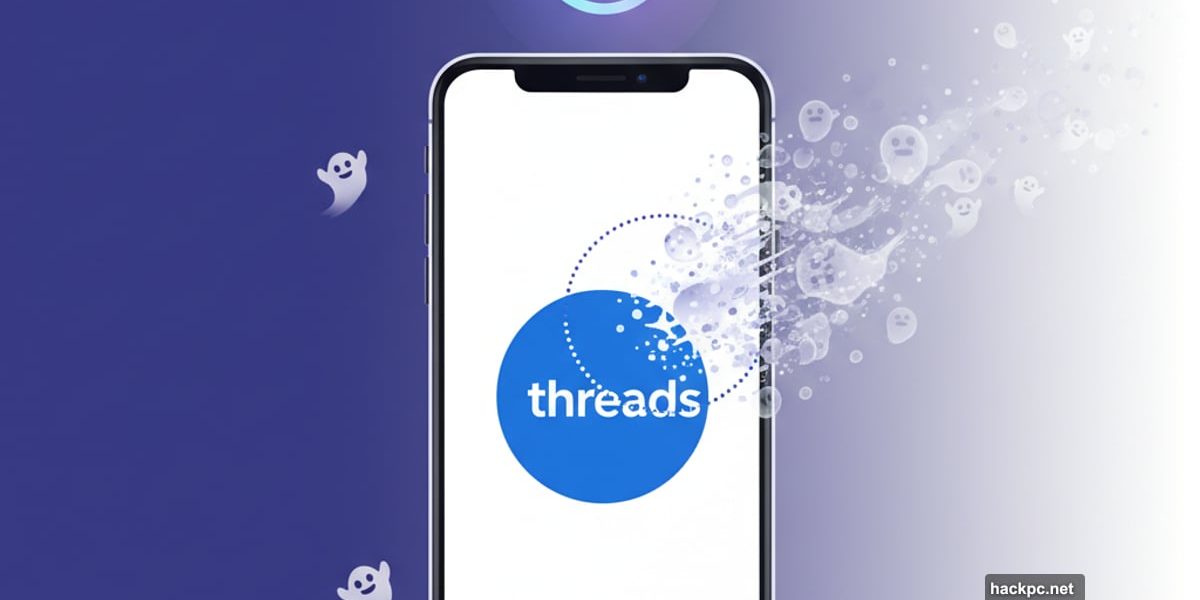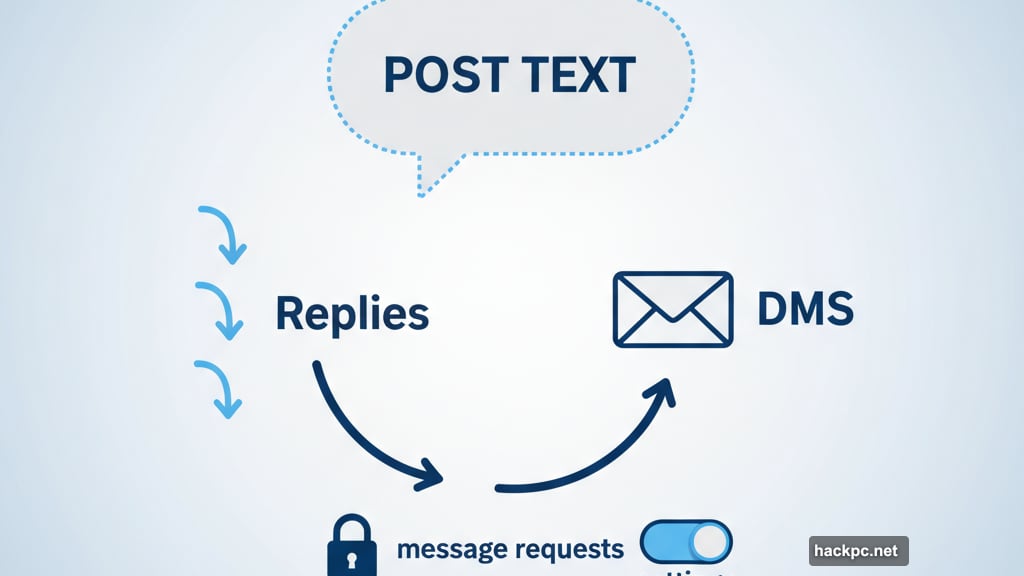
Meta’s dropping a bomb on social media permanence. Starting Monday, Threads users can post content that vanishes after 24 hours.
The feature’s called “ghost posts.” Over 400 million monthly users can now share thoughts that self-destruct. No manual deletion needed. No third-party tools required. Just automatic archiving after one day.
This changes how we think about social media posts. Everything you share doesn’t have to live forever anymore.
How Ghost Posts Actually Work
Creating a ghost post takes one tap. Open Threads on mobile. Hit the new ghost icon when composing. That’s it.
Your post appears in feeds with a dotted bubble around it. That visual marker tells everyone this content won’t stick around. But here’s where things get interesting.
Replies don’t work like normal posts. Instead, they land directly in your DMs. Your timeline stays clean. Conversations happen privately, not publicly.
Plus, engagement metrics stay hidden from everyone except you. Others see smiley-faced icons showing people liked and replied. But only you know the real numbers. Only you see who actually engaged.
After 24 hours? Poof. The post disappears from everyone’s timeline. However, you still have access through the archived section in settings.
The Privacy Twist Nobody Expected
Meta built in smart privacy controls. If you’ve disabled message requests, only your followers can reply to ghost posts. Makes sense for managing unwanted interactions.
But if message requests are enabled, anyone can reply. Those responses from non-followers go to your message request inbox instead of main DMs. You stay in control of who reaches you directly.
These settings live in the drop-down menu on your profile. Takes seconds to adjust based on how public you want your ghost posts to be.
Why Meta Thinks This Will Stick
Remember Twitter’s Fleets? That experiment crashed and burned in 2021. Twitter killed it after less than a year because nobody used it.
So why would Threads succeed where Twitter failed? Meta points to Stories on Instagram and Facebook. Those disappearing features work incredibly well. Millions use them daily.
Meta’s betting on “low-stakes sharing.” The company wants people posting more unfiltered thoughts. More live reactions. More experimental content they wouldn’t share permanently.
That’s a big deal. Social media anxiety often comes from permanence. Every post lives forever in your history. Search engines index it. Screenshots preserve it. That pressure makes people post less.
Ghost posts remove that pressure. Share a hot take. React to breaking news. Try weird content experiments. If it bombs, it’s gone tomorrow anyway.
The Hidden X Competitor Move
This feature directly attacks X’s weakness. Want to delete old tweets on X? You need third-party paid services. Or you manually delete posts one by one. Both options suck.
Threads just made temporary posting native. No extra tools. No subscriptions. Built right into the app.
That matters more than it seems. People increasingly want control over their digital footprint. They want posts that match their current thinking, not stuff from five years ago.
X forces you to either keep everything or pay someone else to clean up your history. Threads just handed you the eraser for free.
What This Means for Content Strategy
Ghost posts create new opportunities. Live event reactions make perfect sense now. Share thoughts during a conference. React to sports games. Comment on breaking news. Then let it all disappear.
Behind-the-scenes content works great too. Show your process. Share rough drafts. Post unpolished ideas. The low-stakes nature encourages experimentation.

But here’s the catch. Ephemeral content doesn’t build searchable history. Your best insights vanish. Your viral moments disappear. That trade-off matters for creators building an audience.
Smart strategy? Mix both. Use permanent posts for evergreen content. Save ghost posts for timely reactions and experimental ideas.
Threads Keeps Moving Fast
Meta launched Threads in July 2023. Since then, they’ve shipped features at breakneck speed.
Custom feeds arrived. DMs launched. Fediverse sharing connected Threads to open networks like Mastodon. Text attachments now support up to 10,000 characters. Spoiler hiding tools protect users. Interest-based communities just started.
Ghost posts join this rapid iteration cycle. Meta clearly wants Threads growing fast and staying competitive. They’re not waiting around to see what works.
That aggressive development strategy seems to be paying off. The platform hit 400 million monthly users. That’s massive growth in just over two years.
The Real Experiment Here
Meta’s testing something bigger than just temporary posts. They’re asking whether social media needs permanence at all.
For years, we assumed posts should last forever. Your timeline tells your story. Your history shows your growth. Permanence seemed fundamental to social networking.
But maybe that assumption was wrong. Maybe the pressure of permanence actually stops people from sharing. Maybe temporary content unlocks more authentic conversations.
Ghost posts will answer that question. If people use them heavily, it proves demand exists for impermanent social media. If nobody touches the feature, well, we’ve seen that movie before with Fleets.
The stakes are high. Social media is shifting. People want more control. They demand better privacy. They’re tired of everything living forever online.
Meta’s betting ghost posts tap into those desires. We’ll know soon if they’re right.



Comments (0)